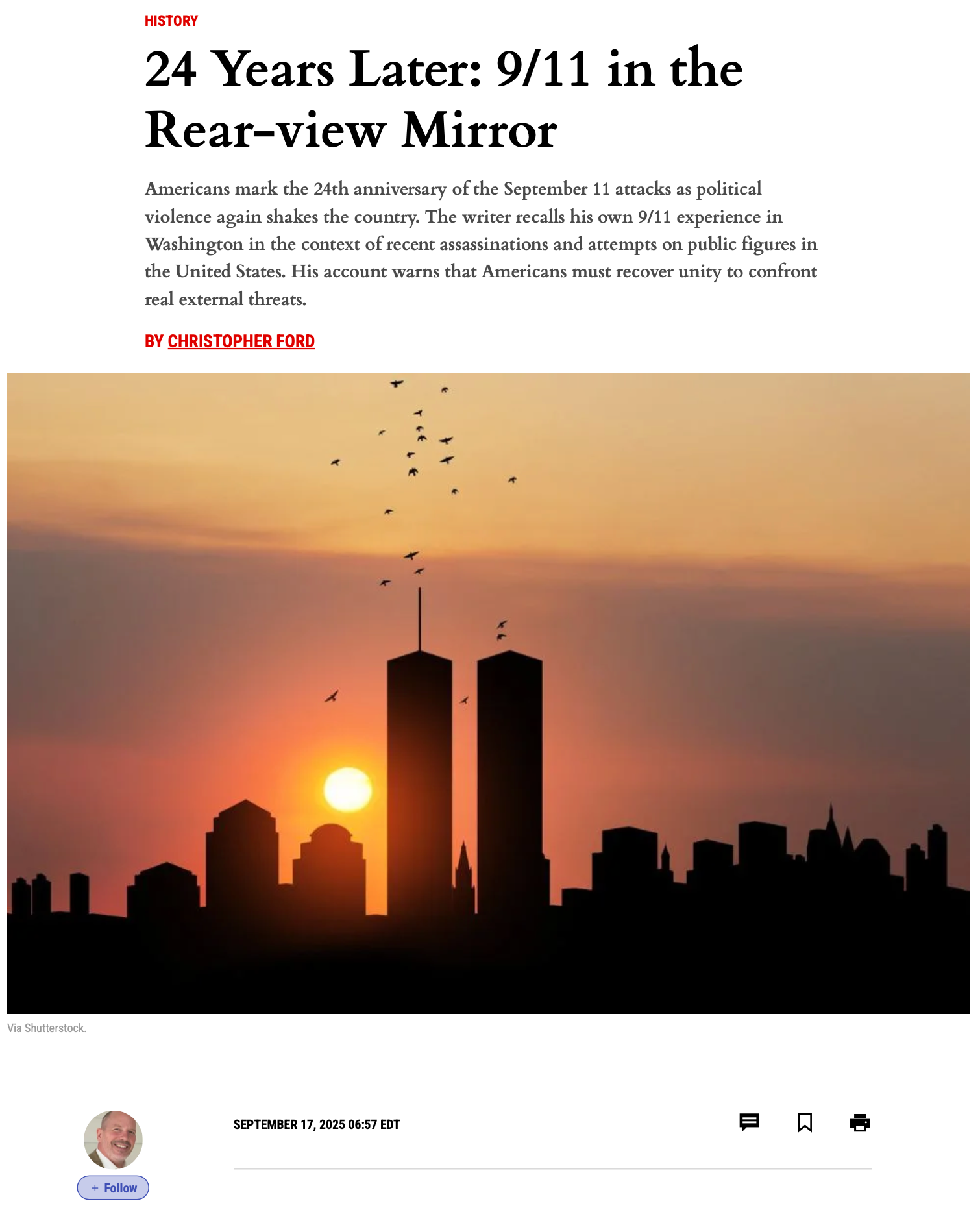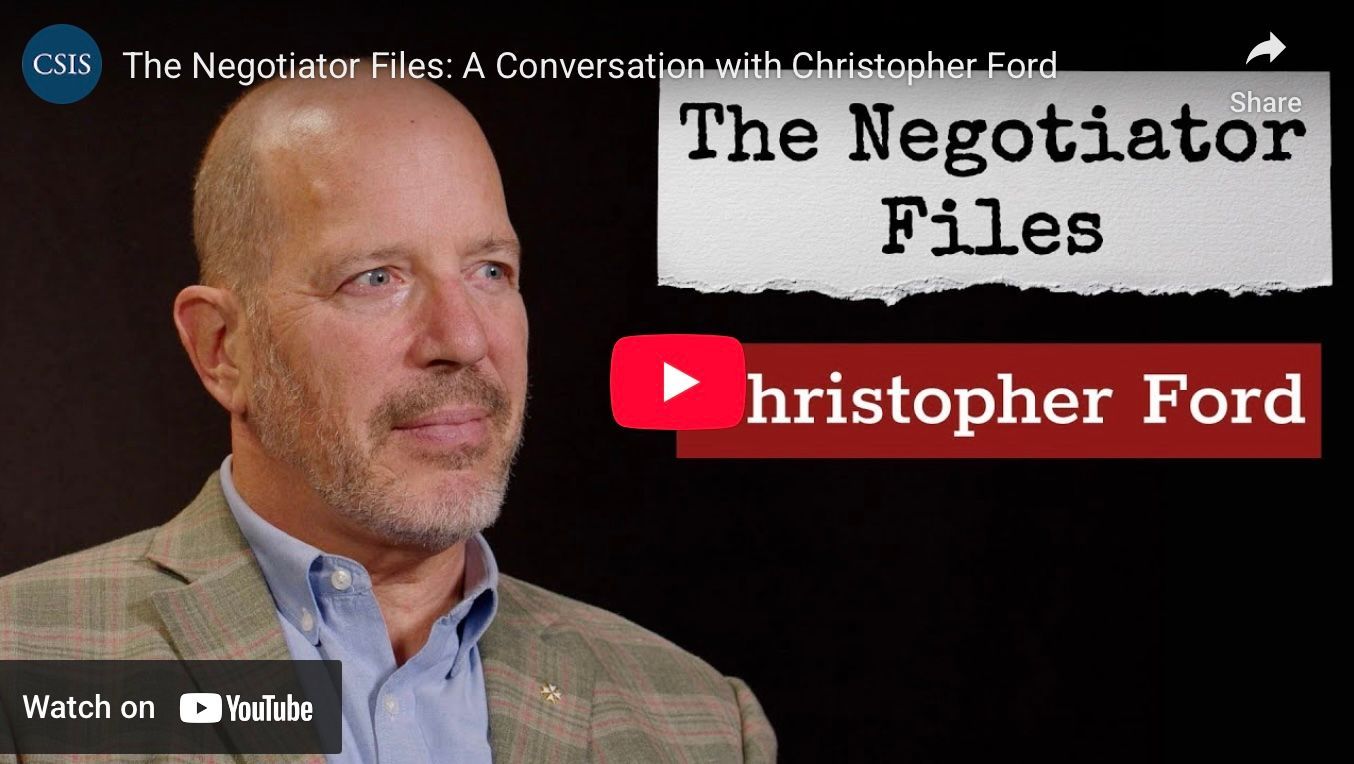Korean Denuclearization: Principles and Proposals
Note:
Below follows the text of Dr. Ford’s oral remarks on April 1, 2012, to a “Track II Dialogue” meeting in Germany, between North Korean officials and former U.S. officials and other subject matter experts, sponsored by the Aspen Institute Germany. The longer paper Dr. Ford presented at this meeting is available from Hudson Institute; you may download a PDF of the document by clicking this link . (Note that Dr. Ford also presented a paper and delivered oral remarks at an earlier Aspen-sponsored “Track II” event with DPRK officials in 2011, both of which can be found on NPF.) Theseremarks and Dr. Ford's paper are reproduced with the kind permission of Aspen Germany.
Good morning, and thanks to Aspen for their gracious hospitality. It is a pleasure to be able to participate once more in this Aspen-sponsored DPRK-USA dialogue, and to see so many familiar faces around the table.
By now, many, and perhaps most, outside commentators have concluded that the Democratic People’s Republic of Korea (DPRK) is not serious about negotiating denuclearization. Nevertheless, in an effort to contribute to this Aspen dialogue – and at a time when the official track between the parties seems on the verge of collapse as a result of the DPRK’s determination to go ahead with what it says is a satellite launch but which is effectively a test of long-range ballistic missile technology – the paper I prepared for this conference attempts to think through some of what might constitute an effective and sustainable Korean Denuclearization Treaty (KDT) if indeed it were suddenly possible to start negotiating one.
In doing this thinking, I have relied upon a number of assumptions. They are spelled out in detail in the paper, but I will summarize them briefly here.
- First, I assume that the elimination of all nuclear weapons and related weaponization and fissile material production infrastructure, facilities, items, and materials in the DPRK is indeed the desired objective, and that this should be brought about by negotiations. This has important implications, because if the objective of negotiating is really to achieve this – rather than simply to stall for time, create the illusion that a negotiated solution remains possible, or achieve some other purpose – then one cannot cut corners in negotiating Treaty elements, and there is no way to avoid grappling with the challenges of implementation and verification.
- Second, I assume that all Six-Party Partners have important roles to play, and should be involved both in negotiating and in implementing a KDT – and that the Republic of Korea (ROK) must be a full partner in all negotiations from the earliest stages. These issues must not simply be decided by fiat between Washington and Pyongyang.
- Third, my paper assumes that it is essential that any Treaty be formally approved at least in the core signatories – the United States, ROK, and DPRK – and perhaps by all Six-Party partners. A real KDT is not something to be casually agreed.
I recognize that this raises questions that many participants may wish to avoid, so let me take a quick excursion here beyond what I discuss in the paper itself. If the parties really do want an agreement that can survive severe domestic scrutiny in multiple capitals and outlive changes in other parties’ policy priorities, they will need to do much more to formalize the process of reaching agreement than simply have some jet-lagged ambassador nod “yes” to a handful of his counterparts in a conference room in New York or Beijing.
I’m not just talking about the hurdle of U.S. ratification – though one should neither underestimate it as a formidable challenge to be overcome, nor underrate its potential as an opportunity to obtain domestic stakeholder “buy in” and to apply “quality control” on the output of the diplomatic process. The example of pre-unification struggles over inter-German diplomatic dealings during the Cold War suggests that both Koreas will need at least some formal mechanism by which to approve and make legally valid deals reached with the other: a mechanism functionally equivalent to official treaty ratification, yet which fits within their continuing policy of reciprocal non -recognition. (The situation would be easier if Seoul and Pyongyang were willing officially to recognize the reality of each other’s existence, but so far they show no sign of being willing to abandon their insistence that there is only one Korea. This probably rules out formal “treaty” ratification between them, as it did between East and West Germany.) The creation of some such ratification-alternative took some delicate legal maneuvering in the inter-German context, and we cannot ignore it in the inter-Korean context if we are serious about a KDT.
This is why we can’t keep dodging or wishing away the question of inter-Korean legalisms. If we genuinely want a durable KDT, it has got to be formally approved, and not just in Washington. This means, in turn, that the process of creating appropriate approval mechanisms within or between the two Korean governments must be undertaken in parallel with, or as part of, whatever negotiations are underway on denuclearization. Continuing merely to kick this question down the road bespeaks a lack of seriousness about denuclearization; a serious KDT project must tackle this aspect too.
But let us get back to the assumptions in my paper.
- Fourth, a Treaty should cover the Korean Peninsula, and only the peninsula. Attempts to regulate non-Korean forces farther afield are a recipe for collapse.
- Fifth, technologies and information related to nuclear weaponization require special handling and procedures. While the International Atomic Energy Agency (IAEA) is probably able to oversee dismantlement of dual-use facilities and capabilities, weaponization-related work requires oversight by a one or more NPT nuclear weapons states. In order to ensure adequate international confidence in denuclearization while minimizing proliferation risks, all weaponization-related elimination work would have to be conducted either directly by weapon-state outsiders themselves, or by DPRK authorities operating under their close observation and supervision. It must also take place under conditions carefully agreed in advance.
- Sixth, my paper assumes that while clever technological approaches might yet help at least somewhat to ease the burden of verifying the absence of undeclared activities, the lion’s share of verification and elimination (V&E) work will have to be done through traditional methods involving the presence of international verifiers on the ground with broad investigative powers. We cannot avoid the challenge of inspector presence and inspector investigative authorities.
- Seventh, negotiating and implementing a KDT does not have to be delayed pending a peace treaty between the DPRK and the United States and/or the ROK. There is no reason of precedent or law that would prevent denuclearization moving in parallel with – or in advance of – negotiations on other matters.
- Eighth, and finally, it is my belief that these assumptions are in effect sine qua non conditions for a meaningful and successful denuclearization agreement. If these standards are not met, no resulting KDT would be effective or sustainable.
After setting out these assumptions, my paper goes on to explore possible lessons that might be learned from U.S.-Soviet strategic negotiating. In particular, I highlight the problems of managing negotiations under conditions of great non-symmetry between the parties – an issue that did not arise so much in the Cold War context, but is an inescapable element of any deal involving the three core Six-Party participants. My paper assumes that a successful KDT could have at most a limited or bounded symmetry, and would not be based upon overall, aggregative reciprocity or reciprocity between all the negotiating parties. In particular – and here the paper offers an outline of the basis for one of my key assumptions – it is essential to limit a KDT to matters within the Korean Peninsula itself, for no feasible deal could be symmetrical with regard to extra-Peninsular forces possessed by countries other than the DPRK and ROK.
Nevertheless, the core of a denuclearization deal could indeed be based upon symmetry and reciprocity to the extent that it prohibited anyone from possessing nuclear weapons or fissile material production on the Korean Peninsula, and provided international verification mechanisms for demonstrating all parties’ compliance with this rule. In effect, Seoul would trade away its right to invite U.S. or other nuclear weapons back into the country, in return for which the DPRK would dismantle its existing weaponry and renounce any analogous foreign deployments. Thereafter, no one would be permitted to develop or deploy nuclear explosive devices in the DPRK or the ROK, with the KDT thus serving as a de facto Nuclear Weapons Free Zone (NWFZ) for the Peninsula.
Historical examples also suggest that it is vital to accompany elimination provisions with elaborate and intrusive verification mechanisms. Particularly with Pyongyang already having revealed the existence of a sizeable uranium enrichment infrastructure – and with (hopefully unfounded) rumors now abounding of possible additional DPRK nuclear tests conducted in secret, and perhaps supporting the development of tritium-“boosted” nuclear devices involving more advanced design technology and potential weapon miniaturization – the requirements for verifying elimination and adequately assuring the absence of undeclared capabilities will be demanding. If such verification can be agreed, there is hope for a KDT; if not, there isn’t.
One of the things we can also learn from U.S.-Soviet and U.S.-Russian arms control is the potential utility of a forum for discussing implementation and compliance issues on an ongoing basis. To be sure, such fora – including the Special Verification Commission (SVC) of the INF Treaty, the START agreement’s Joint Compliance and Inspection Commission (JCIC) and the Bilateral Consultative Commission (BCC) recently established under “New START” – are no panaceas for political problems between the parties, and have frequently proven frustrating in practice. Nevertheless, such bodies have been found more useful than useless in superpower practice, and may be on the Korean Peninsula as well.
The DPRK would of course need to show more respect for such institutions than it has when they have previously been used on the peninsula, since its behavior in the Military Armistice Commission (MAC) after the Korean War and in the Joint Nuclear Control Commission established with the ROK in 1992 left much to be desired. That said, I believe some kind of “Interpretive and Compliance Issues Forum” (ICIF) could be a useful treaty-management tool and confidence-building measure within a KDT. (A Treaty might even contain an “exhaustion-of-remedies” requirement, pursuant to which treaty withdrawal would be effective only if the point of grievance in question had first been raised, and unsuccessfully addressed, in the ICIF.)
In broad conceptual form, a KDT would function like the Chemical Weapons Convention (CWC) within the Korean Peninsula , inasmuch as it would require possessors to dismantle a form of weaponry now prohibited to them, and impose merely transparency-based verification rules upon those who did not have such tools to start with. Farther afield, a KDT would function more like the Nuclear Nonproliferation Treaty (NPT), imposing prohibition rules upon some parties ( i.e. , the Korean partners) but leaving others’ arsenals unaffected except insofar as possessors would be obliged not to assist the Peninsular parties with nuclear weapons development or supply them with such devices. (In addition, as noted above, the NWFZ-like aspects of a KDT would bar possessor states from bringing weapons to the Peninsula, and prohibit the Koreas from inviting such deployment.) Such a combination of the prohibitory and dismantlement focus of the CWC and the two-tiered structure of the NPT may be a promising general model for a KDT.
My paper then goes into detail discussing “special cases” of past weapons of mass destruction (WMD) V&E work, including the examples of South Africa, Libya, Iraq, and Iran. For reasons I do not have time to outline here, I believe the South African case offers few lessons for us, while the Libyan example of 2003-04 provides a promising model of negotiated trilateral V&E cooperation. The Iraq model is not so helpful, however, since there is little prospect of replicating the coerciveness of the UNSCOM/UNMOVIC process in the Koreas. Iraq however, does illustrate the importance of preventing weapons reconstitution by addressing the issue not just of equipment and materials but of “human capital.” (This lesson is also suggested by Cooperative Threat Reduction work in the Former Soviet Union, and by the assistance apparently given to the Iranian nuclear weapons program by a scientist formerly involved with the Soviet program.) The Iran case, in turn, offers lessons about the difficulty of cooperative inspections and the importance of broad inspection authorities.
I certainly don’t wish to overstate the case for the feasibility of a Korean Denuclearization Treaty, for I am pessimistic, believe Pyongyang does not intend to negotiate a resolution, and have seen nothing so far to suggest I am wrong in such conclusions. (Indeed, U.S.-Soviet precedents suggest that historically, arms control and disarmament progress has usually followed rather than preceded fundamental changes in the political relationship between rival powers – and, in fact, has often been associated with dramatic processes of regime reform or collapse on one side of the equation.) If a treaty were possible on the peninsula, however, I believe it would have to follow the basic lines I suggest herein.
I look forward from hearing from my DPRK colleagues on these points, as well as from other participants.
Thank you.
-- Christopher Ford







